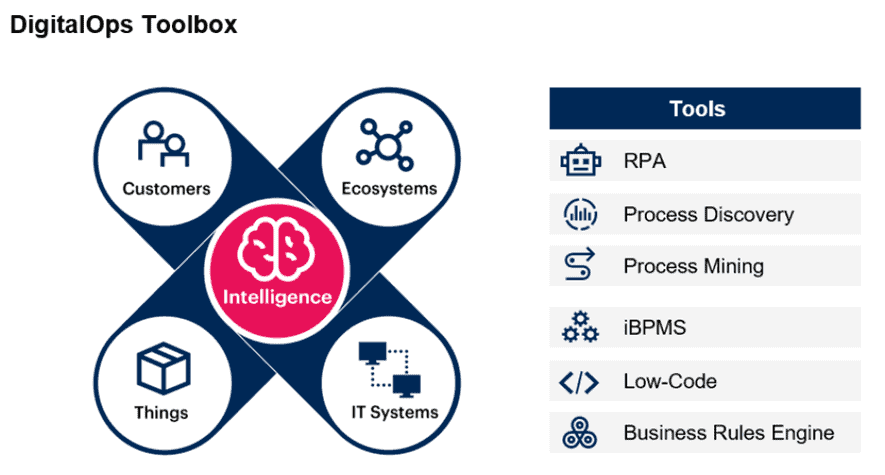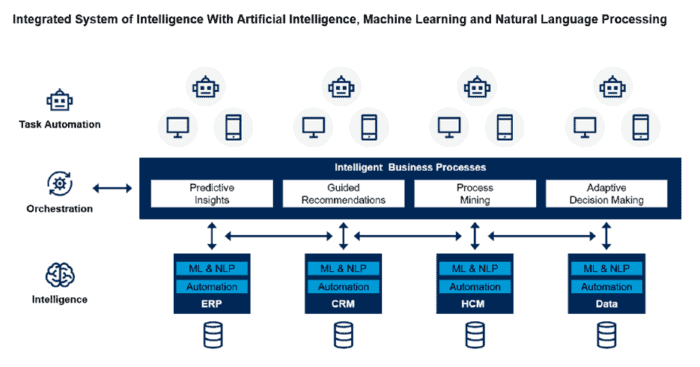Assembling a Digital Operations Toolbox for Hyperautomation
In this article, we’ll explore the components of a digital operations toolbox and how it can be leveraged in your hyperautomation journey.
Breaking Down The Digital Operations Toolbox
In a previous blog post, we introduced the popular concept of hyperautomation – a term used to describe next level automation achieved through combining Robotic Process Automation (RPA), Artificial Intelligence and Machine Learning capabilities. Now that we’ve established a hyperautomation base, it’s time to go further by breaking down the components of a digital operations toolbox, what technologies are encompassed it in, and how they impact your hyperautomation journey.
In the realm of hyperautomation, a digital operations toolbox serves as an evolutionary shift – moving task-based technologies, tools and functions like process mining, RPA and document ingestion into digital operation drivers.
What Encompasses a Digital Operations Toolbox?
The diagram below details the use-cases and tools used to match long-term business objectives. We can identify the optimal combinations of these tools according to our needs.
Digital Operations Tools and Use Cases
AI and ML are used specifically for process automation scenarios to enable RPA task automation, BPM/LCAP/DMS dynamic orchestratons, and to provide an added layer of intelligence. Common use cases of AI, ML and NLP within business process automation include many industry specific instances, such as claims handling, anti-money laundering efforts and product data matching in retail. Case management, contract management, legal processes and clinical trials are more examples.
Recommendations When Implementing AI, ML or NLP
In conclusion, here are some recommendations and best practices while implementing AI, ML or NLP in your digital operations toolbox, and during your hyperautomation journey:
Looking for more on hyperautomation?
Explore more insights and expertise at smartbridge.com/automation
Keep Reading: AI-Enabled Hyperautomation for Document Processing
There’s more to explore at Smartbridge.com!
Sign up to be notified when we publish articles, news, videos and more!
Other ways to
follow us:







